| Can transform the results of an experiment in any one frame to any other. |  |
 M. C. Escher: Relativity
M. C. Escher: Relativity
| How fast is he moving relative to the ground? |
| How does this motion appear from the point of view of someone in the train? |
| How does this motion appear from the point of view of the bandit? |
| In the train frame |
| In the earth frame |
| Can transform the results of an experiment in any one frame to any other. |  |
Velocity in earth frame = Velocity of train frame + Velocity in train frame
v = v0 + v' |
 |
| and can compare them both |  |
[2] is a hidden assumption, that was never written down. The correct statement (Einstein) is
From the point of view of the earth we would expect
c' = v0 + cin fact c' = c |

|
In the train frame:
t' = 2L/c |
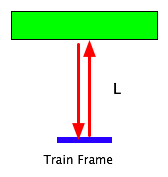 |
In the earth frame, the light has to travel further, since the train has moved dist
d = v0t t = 2D/cand D2 = L2 + (d/2)2(Pythagoras) |
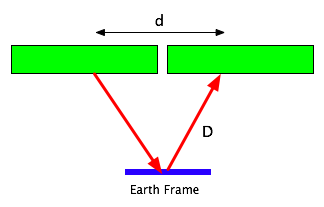 |
Note that (1-v02/c2)1/2 ~ 1 for all cases we are familiar with (which is just as well!)
| The twin paradox: α-Centauri is 4 light-years distant from earth. Fred and Fred' are both 21. Fred' leaves for α-Centauri at .9 c.
How old is Fred when Fred' gets back? How old is Fred'? |
 |
"What really happens?"
"What can I measure?"
Reality is a dangerous concept
| Hafele-Keating dexperiment done in 1980: atomic clock flown round the world (first-class!) and compared to time of atomic clock "at rest". Time lost by moving clocks ~ 190 ns | 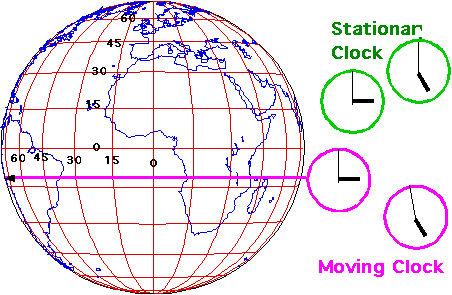 |
Vladimir: That passed the time Estragon: It would have passed in any case. Vladimir: Yes, but not so quickly. Beckett: waiting for Godot.
it therefore follows that the length in the moving frame must be shorter
L' = L(1-v02/c2)1/2 |
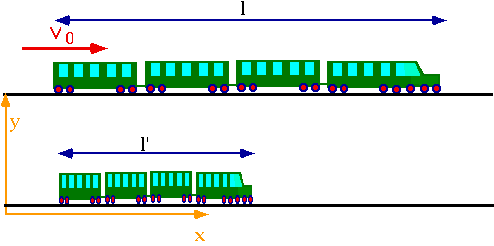 |
p = mv
E = 1/2 mv2
E0 = m0c2
E = pc
Statutory Warning:This is a fudge: you cannot treat light as a massive particle, nor can you handle a very strong gravitational field as if it were a weak one......
| Reduced to 1 (2) space and 1 time dimension, can describe interactions as events: e.g 2 men walk into each and fall over. | 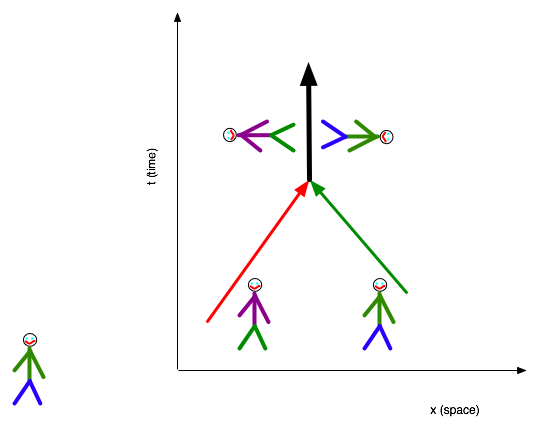 |
|
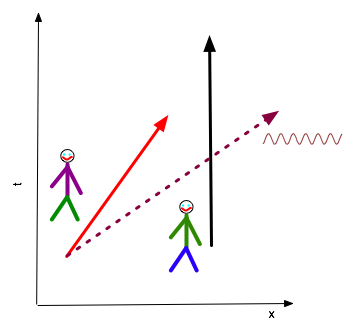 |
| Possible light paths are rep. by "Light Cone". Cannot escape the light cone (it includes all possible futures for you! | 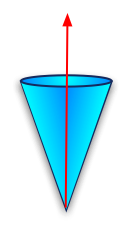 |
| "Light Cone" represents possible paths of signals: i.e. interaction need not be direct, but can send (e.g.) phone message. Shows person A sending signal at time t1 which is received by B at time t2 Note times are measured in A's frame | 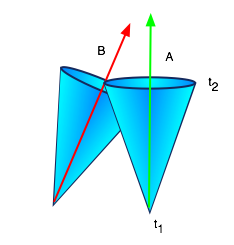 |
| Can see the violation of simultaneity: e.g. two flashes of light are seen as simultaneous by observer A but not by B | 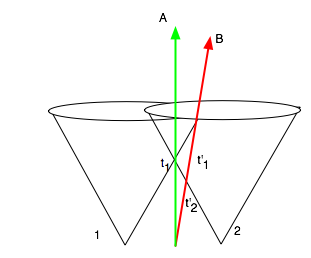 |
| Some world-lines are more complex: e.g. a planet with 2 space dimensions | 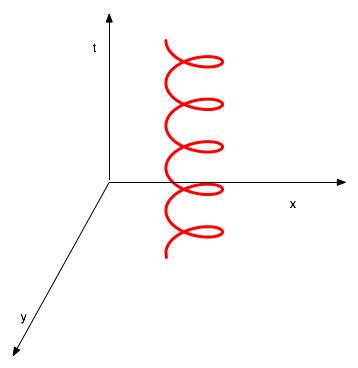 |
| with 1 space dimension | 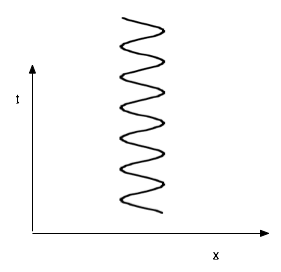 |
| Gravity modifies all this: e.g. close to a black hole, all your futures include falling into it! | 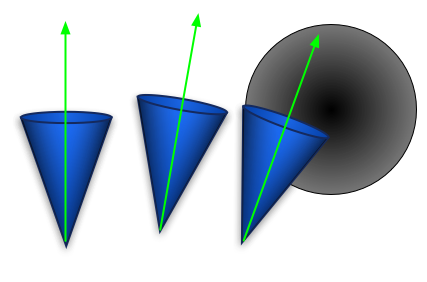 |
| e.g. Midsummer Nights Dream. Note this is a gross over-simplification: e.g the lovers + fairies + Bottom have very complex crossing world-lines |
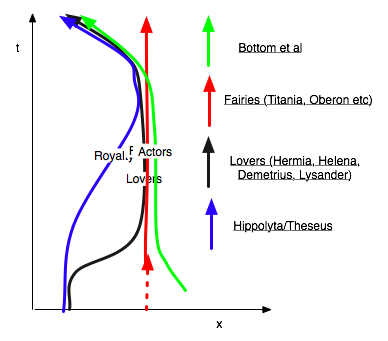 |
Now of time they are much more liberal; for ordinary it is, that two young princes fall in love; after many traverses she is got with child; delivered of a fair boy; he is lost, groweth a man, falleth in love, and is ready to get another child; and all this in two hours' space; which, how absurd it is in sense, even sense may imagine;"Philip Sidney
Time past and time present
Are always present in time future.
T. S. Eliot Burnt Norton
| e.g. Three Time Plays by J. B Priestley: "Time and the Conways" | 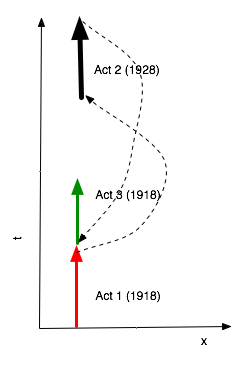 |